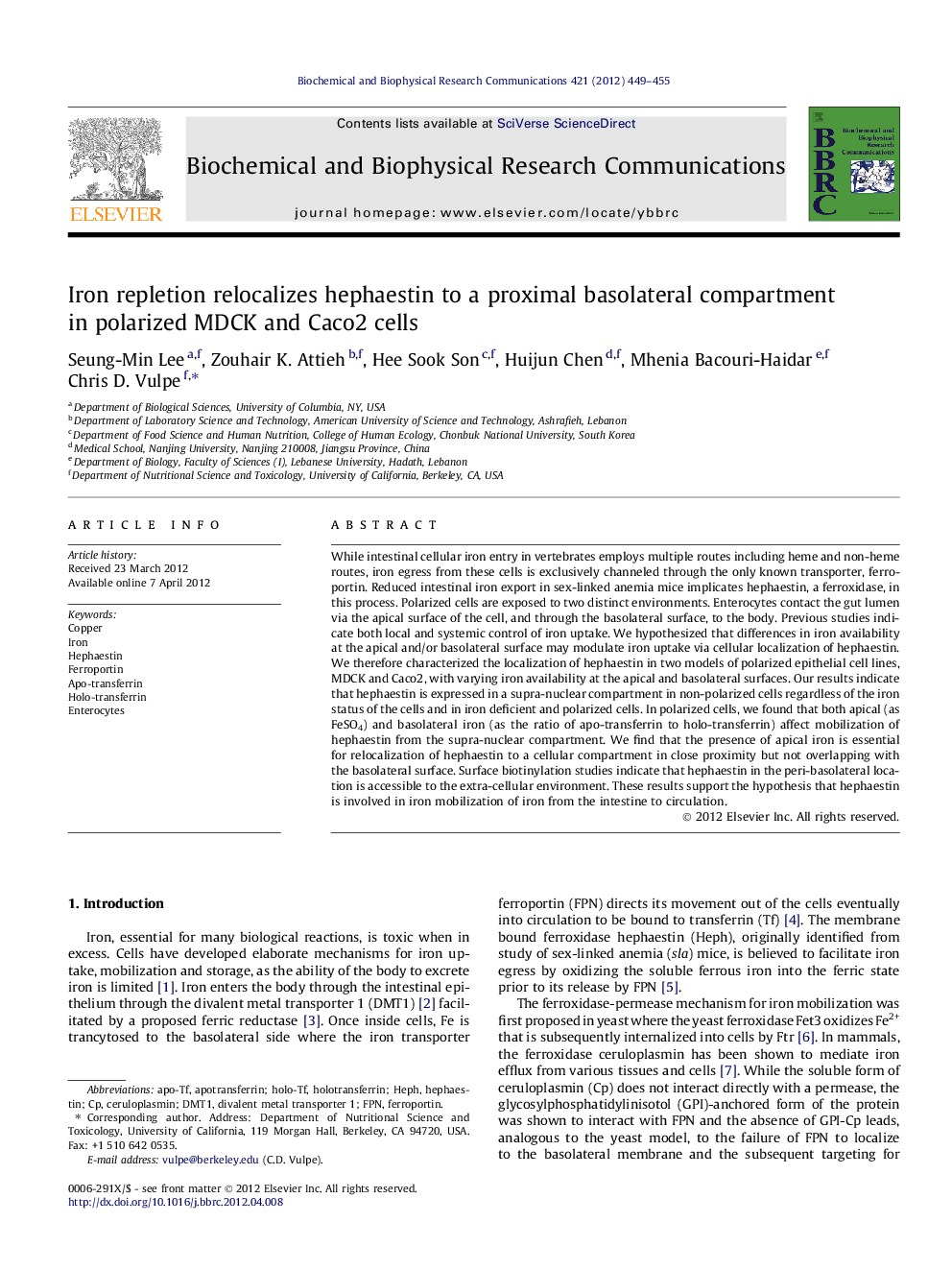| کد مقاله | کد نشریه | سال انتشار | مقاله انگلیسی | نسخه تمام متن |
|---|---|---|---|---|
| 1929644 | 1050470 | 2012 | 7 صفحه PDF | دانلود رایگان |

While intestinal cellular iron entry in vertebrates employs multiple routes including heme and non-heme routes, iron egress from these cells is exclusively channeled through the only known transporter, ferroportin. Reduced intestinal iron export in sex-linked anemia mice implicates hephaestin, a ferroxidase, in this process. Polarized cells are exposed to two distinct environments. Enterocytes contact the gut lumen via the apical surface of the cell, and through the basolateral surface, to the body. Previous studies indicate both local and systemic control of iron uptake. We hypothesized that differences in iron availability at the apical and/or basolateral surface may modulate iron uptake via cellular localization of hephaestin. We therefore characterized the localization of hephaestin in two models of polarized epithelial cell lines, MDCK and Caco2, with varying iron availability at the apical and basolateral surfaces. Our results indicate that hephaestin is expressed in a supra-nuclear compartment in non-polarized cells regardless of the iron status of the cells and in iron deficient and polarized cells. In polarized cells, we found that both apical (as FeSO4) and basolateral iron (as the ratio of apo-transferrin to holo-transferrin) affect mobilization of hephaestin from the supra-nuclear compartment. We find that the presence of apical iron is essential for relocalization of hephaestin to a cellular compartment in close proximity but not overlapping with the basolateral surface. Surface biotinylation studies indicate that hephaestin in the peri-basolateral location is accessible to the extra-cellular environment. These results support the hypothesis that hephaestin is involved in iron mobilization of iron from the intestine to circulation.
► Hephaestin localizes in the perinuclear space in non-polarized cells.
► Hephaestin localizes in the perinuclear space in iron deficient and polarized cells.
► Hephaestin with apical iron moves near to basolateral membrane of polarized cells.
► Peri-basolateral location of hephaestin is accessible to the extracellular space.
► Hephaestin is involved in iron mobilization from the intestine to circulation.
Journal: Biochemical and Biophysical Research Communications - Volume 421, Issue 3, 11 May 2012, Pages 449–455